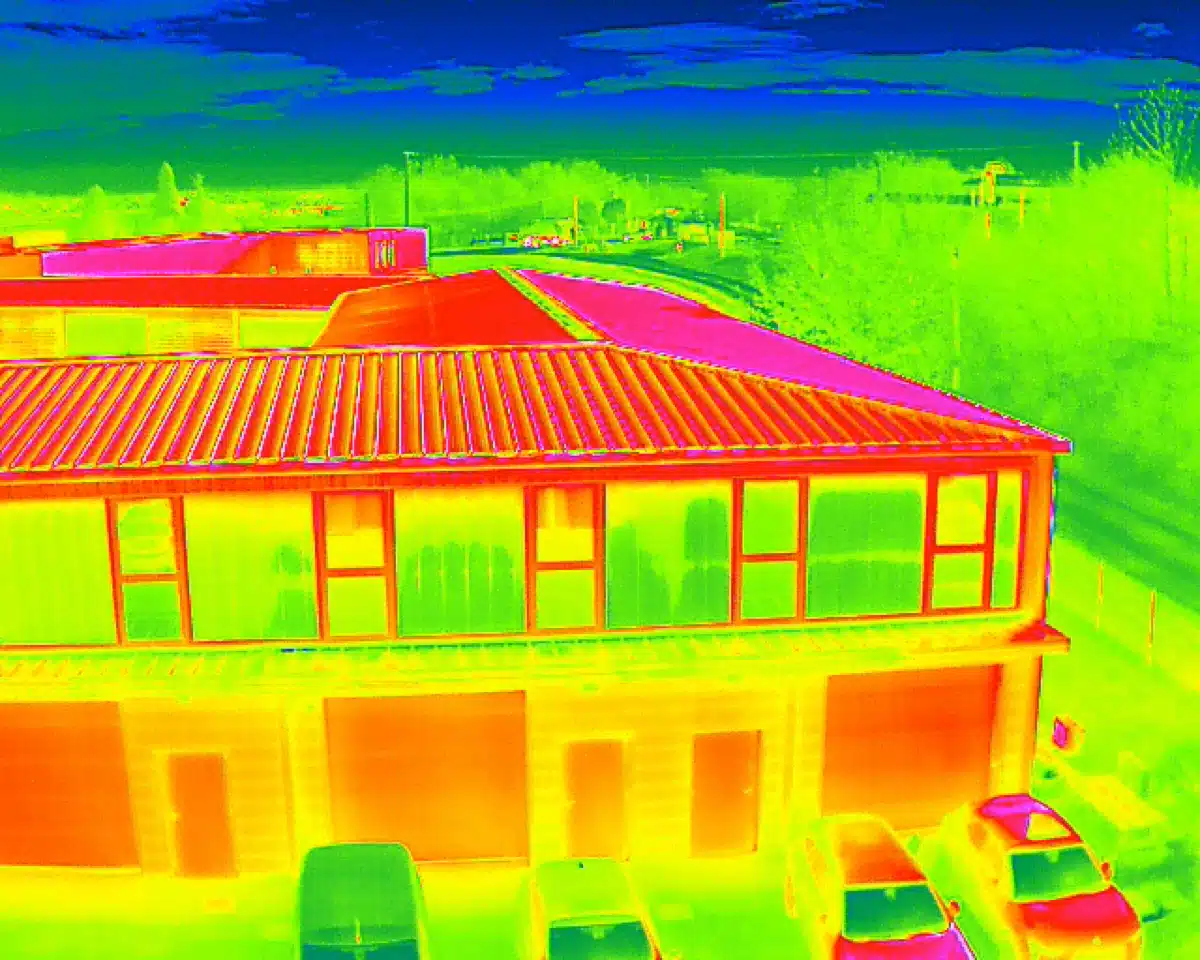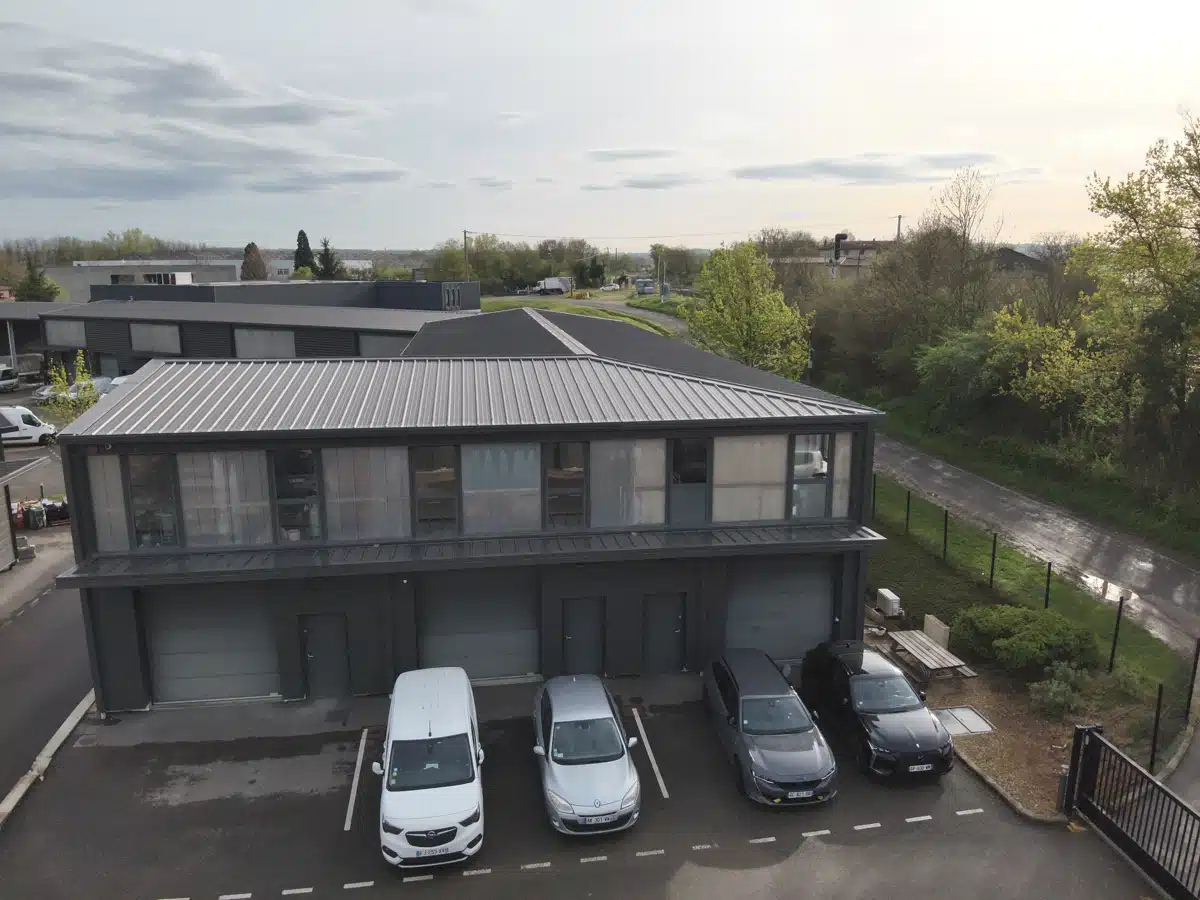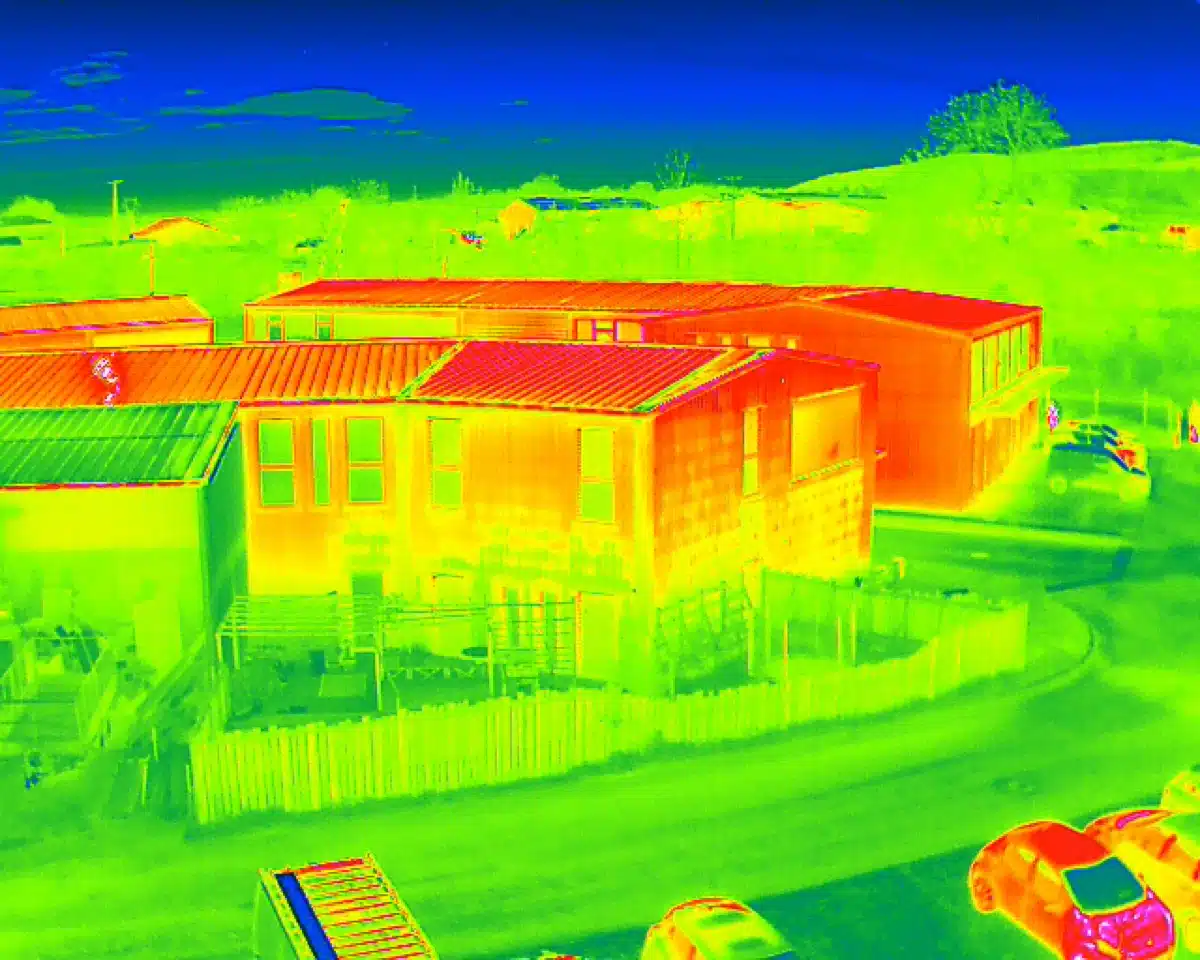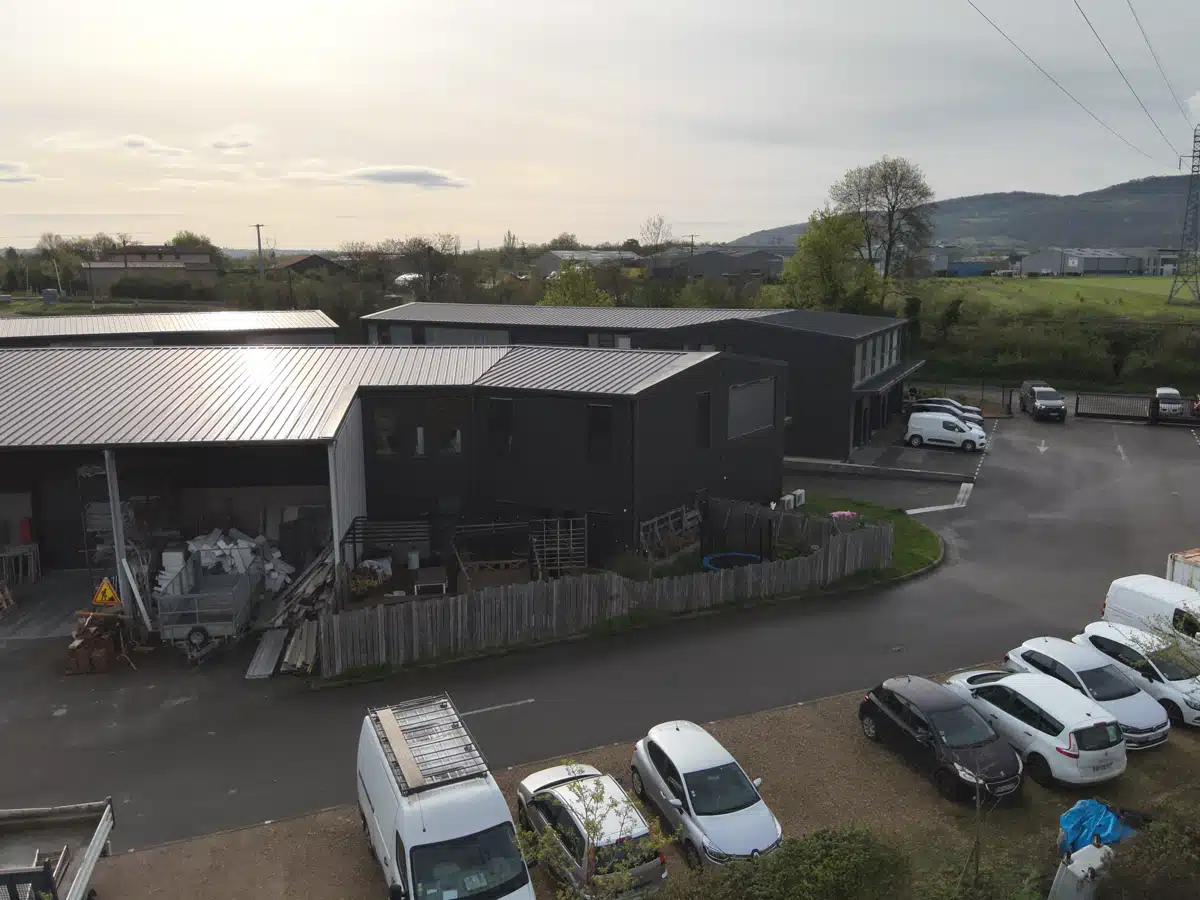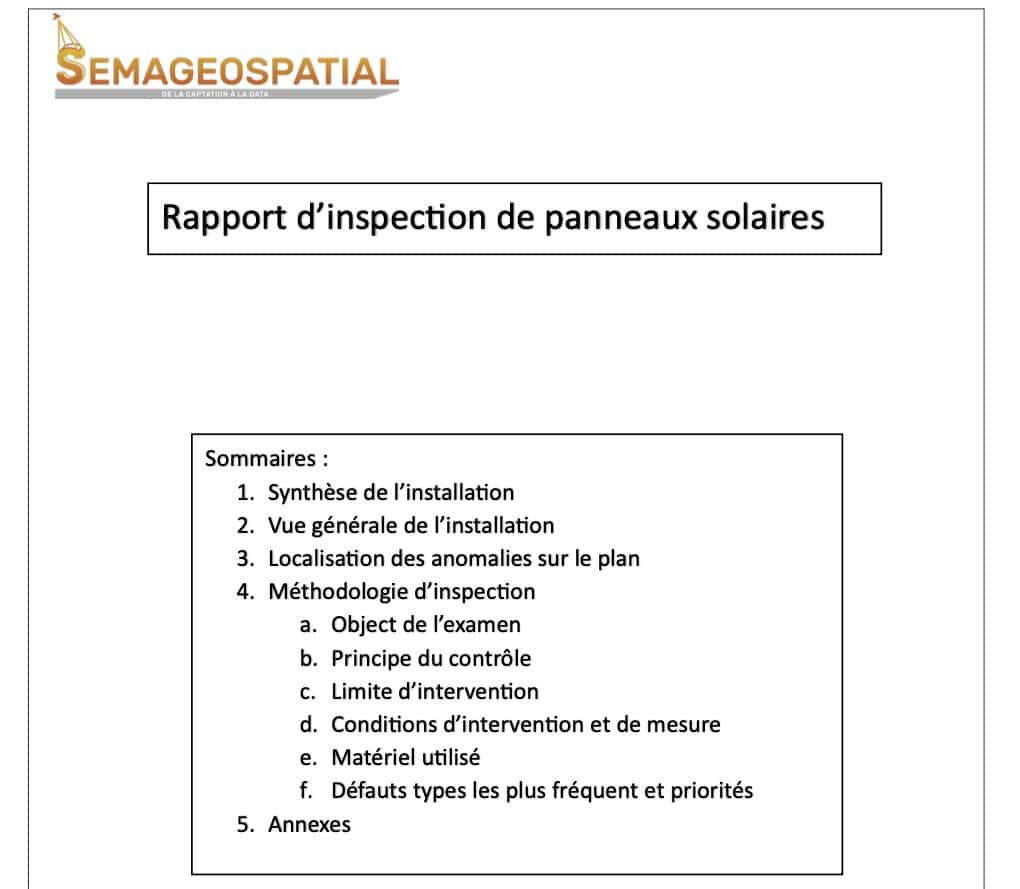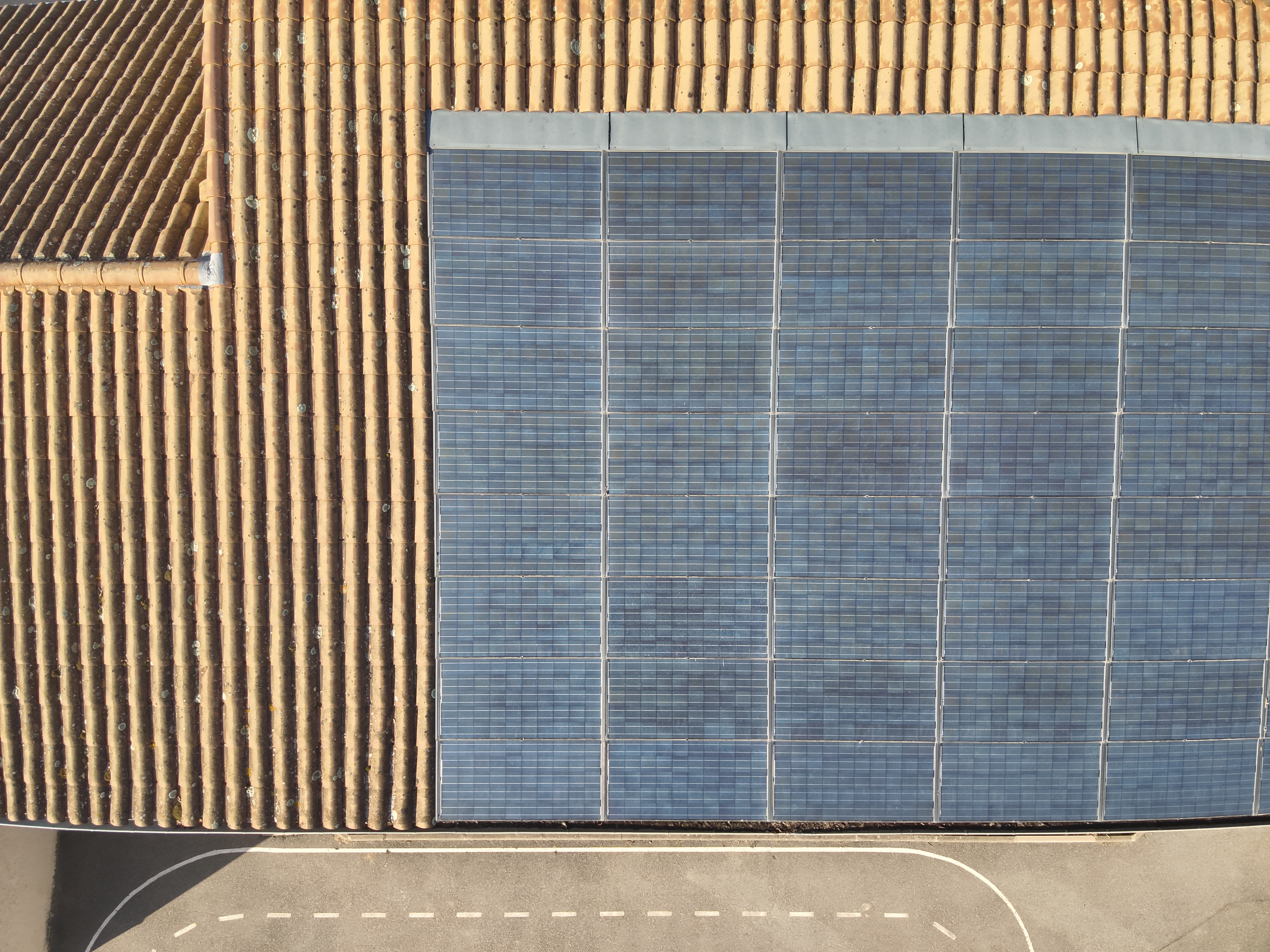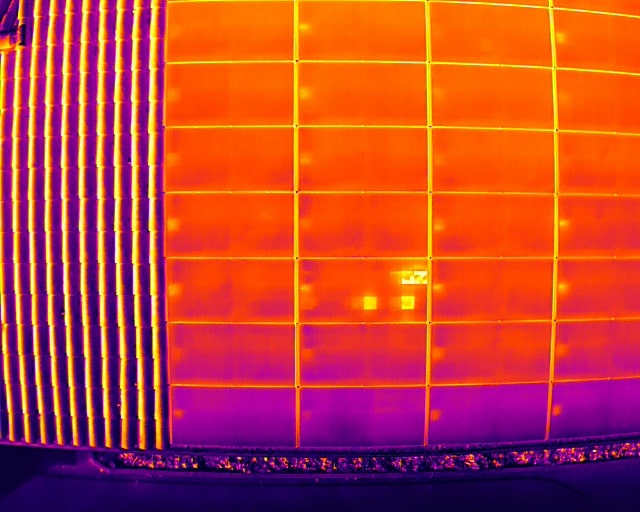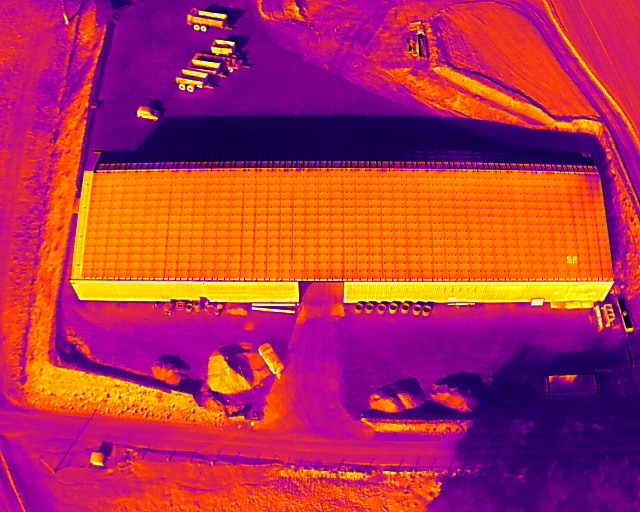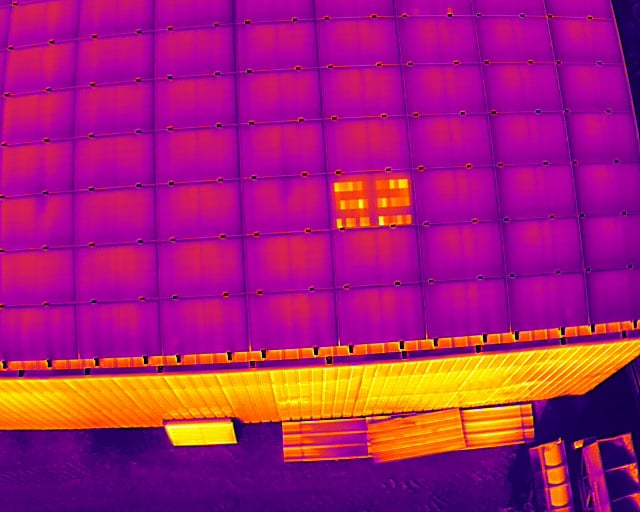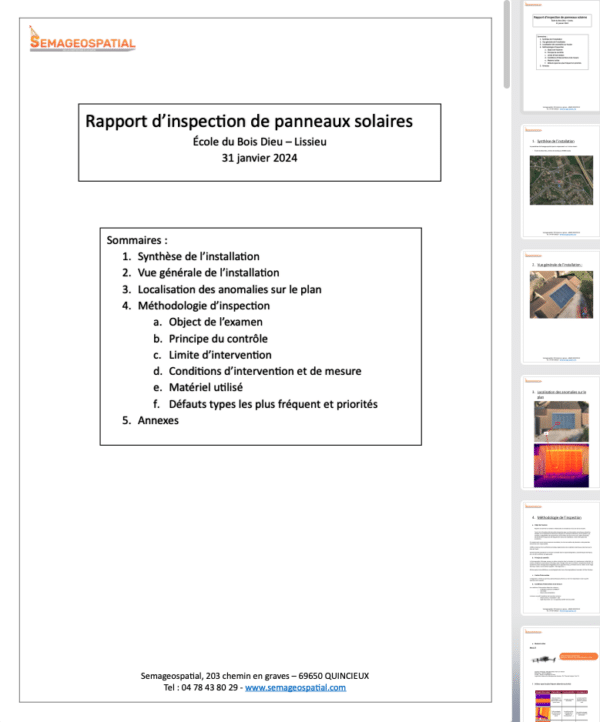Thermography
Detection of thermal anomalies on solar panels and buildings, meaning performance problems and potential energy savings can be quickly identified.
Solar thermography
Using drone technology to inspect the condition of your panels, guaranteeing a long life span and full installation safety.
Thanks to a combination of visual colour and thermal imaging data, any issues can be spotted early. This paves the way for proactive maintenance, enhanced safety, and the best possible performance for your equipment.
- Thermal-imaging drone
- Temperature/overheating measurements
- Analysis by our experts
- An inspection and optimisation report
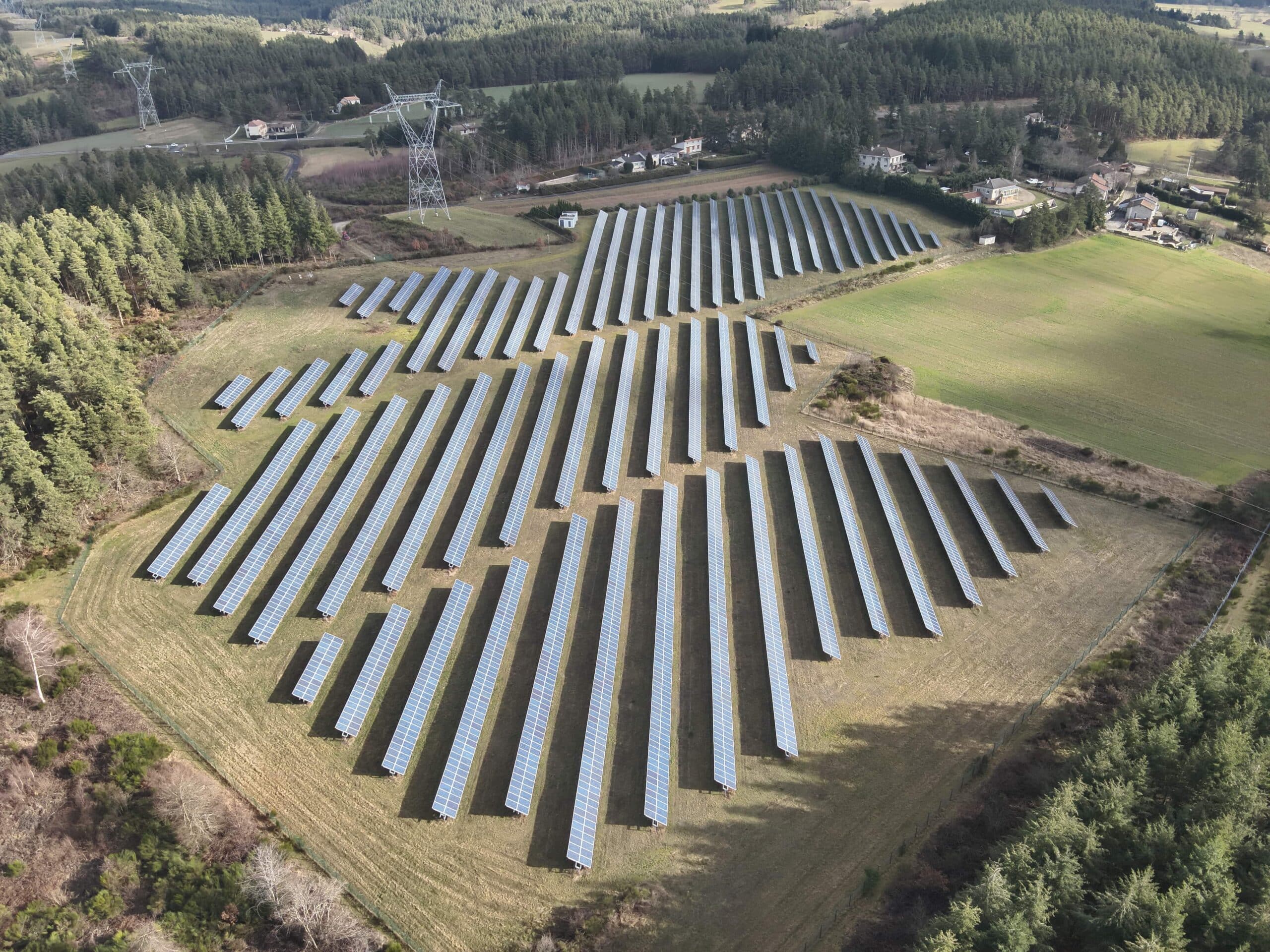
To meet increasing demand from insurers, we offer regular inspections. These preventive assessments, using our drone technology in particular, provide a detailed vision of the equipment’s condition, facilitating risk tracking and management for insurers:
By investing in these inspections, our clients can cement their position and prevent losses, simplifying the compensation process and demonstrating their commitment to safer, longer-lasting installations.
- Ensuring personnel safety
- Preventing fire risks
- Optimising the yield of your installations
- Tracking changes in your equipment over time
- Making it easier to insure your installations
The Semageospatial package:
Semageospatial provides inspections using thermal imaging drones, compiling a detailed report which identifies any localised overheating and highlighting any panels with potential problems.
We also offer regular inspections based on the dimensions of your installations (every one, two, or three years).
Building thermography
Our drone thermography solution allows you to measure the heat flows on your roofs and façades, helping identify any heat loss in hard-to-reach or hazardous zones.

